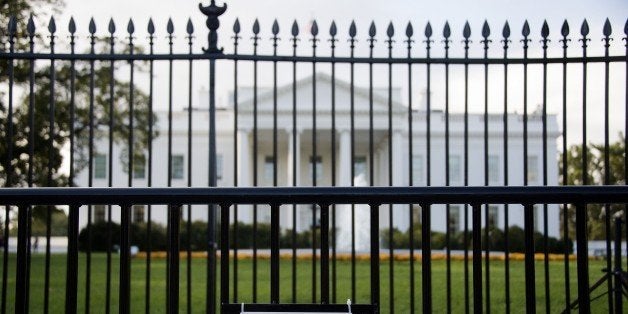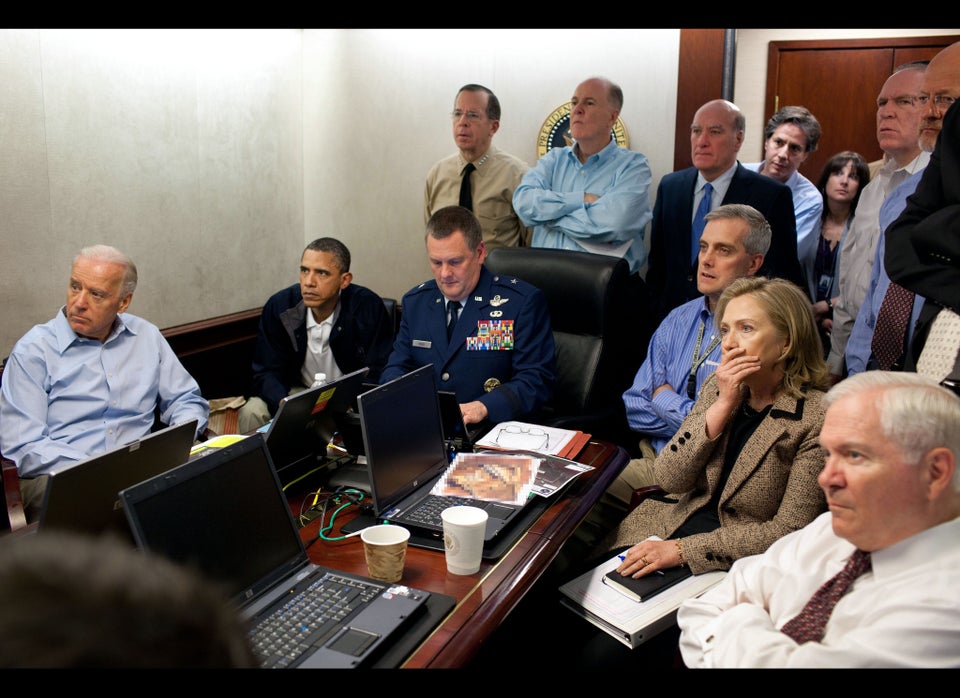
WASHINGTON -- An independent panel tasked with investigating the shortcomings of the United States Secret Service has recommended the White House undergo a bit of a face-lift in order to stop potential intruders.
The panel, which was convened by the Department of Homeland Security Secretary Jeh Johnson this October, called for the fence around the White House to be made four to five feet higher and for its horizontal bars to be eliminated. Currently, the White House fence is 7 feet 6 inches tall.
"A better fence can provide time, and time is crucial to the protective mission," reads the executive summary of the study. "Every additional second of response time provided by a fence that is more difficult to climb makes a material difference in ensuring the President's safety and protecting the symbol that is the White House. Additionally, the ease with which 'pranksters' and the mentally ill can climb the current fence puts Secret Service personnel in a precarious position: When someone jumps the fence, they must decide, in a split-second, whether to use lethal force on a person who may not actually pose a viable threat to the President or the White House. By deterring these more frivolous threats, a more effective fence can minimize the instances when such difficult decision making is required."
Raising the height of the protective fence is the most prominent of the recommendations in the report, of which only the executive summary was released. More broadly, the authors faulted the Secret Service for having an outdated leadership structure that too often left its members under-trained, under-resourced and unclear about their operational functions. The report noted that special agents received only 42 hours of training on average during the fiscal year of 2013. That same year, Service data showed that members of the Uniformed Division had received 576 hours of training -- an amount described as paltry considering the size of the force, at 1,300 officers.
In terms of structural recommendations, the panel suggested the Secret Service find a director from outside its ranks who would completely redo the agency's budget, rather than rely on levels from past years. That director, the report said, "should give serious consideration to whether there are collateral or non-essential missions that can be shed."
Like most panels convened to address government inefficiencies, the DHS report offers broad condemnations and suggestions. The need for better leadership, organization and accountability are constant themes in the executive summary. But so, too, is the demand for more human capital.
"As an interim step, the Panel recommends that Congress and the Executive Branch work together to ensure appropriations sufficient for an additional 85 special agents and 200 Uniformed Division officers; the Panel believes this is a first step, but likely not the last step, to ensure adequate training and personnel for the White House," the summary reads.
All told, the report from DHS marks another chapter in a bumpy year for the embattled Secret Service. The agency faced intense criticism over its failure in September to stop an intruder who had jumped over the White House fence and made his way through the north doors. It was later found that a mix of organizational and technological failures allowed the intruder, Omar Gonzalez, to make it as far into the White House as he did.
Subsequent scandals only sullied the Secret Service's reputation further. Soon after the intruder incident, The Washington Post reported that the Secret Service fumbled its response to a shooting near the White House residence in 2011. Initial reports had indicated that the shooting was actually unrelated activity between gang members in separate cars driving nearby. It was later discovered that the incident involved a gunman who had parked his car 700 yards south of the residence and fired a semiautomatic rifle out of his passenger window.
The Secret Service also took heat for an apparent security breach during the president's visit to the Centers for Disease Control and Prevention in September. During that visit, The Washington Post reported, a private security guard who had been convicted for a felony earlier in his life accompanied the president and, unbeknown to Secret Security officials, was carrying a firearm. The guard also reportedly tried to take pictures of the president while in the elevator, disturbing his security entourage. It was only later that reports emerged contradicting elements of the prior story: the guard in question had never been convicted, he was carrying a CDC-issued firearm, and he tried to take pictures of the president's car, not the president himself.
In response to the Sept. 19 fence jumping, Johnson appointed the independent panel to do an "outside study" of the Secret Service's failures. The group consisted of Tom Perrelli, former associate attorney general; Mark Filip, former deputy attorney general; Danielle Gray, former assistant to the president; and Joseph Hagin, former White House deputy chief of staff for operations. The panel, according to its report, met with more than 120 officials from federal agencies, research facilities, and police and security forces.
"The recommendations are, in my judgement, thorough and astute and fair," Johnson told MSNBC earlier in the day. "And they go to some fundamental ways in which the Secret Service manages itself, how it trains, and both the Secret Service leadership and I, as the leader of the Department of Homeland Security, now have an obligation to take those recommendations seriously."
"This is not something in my judgement, based on the recommendations I've seen, that can change overnight," Johnson said later.
Igor Bobic contributed reporting.

